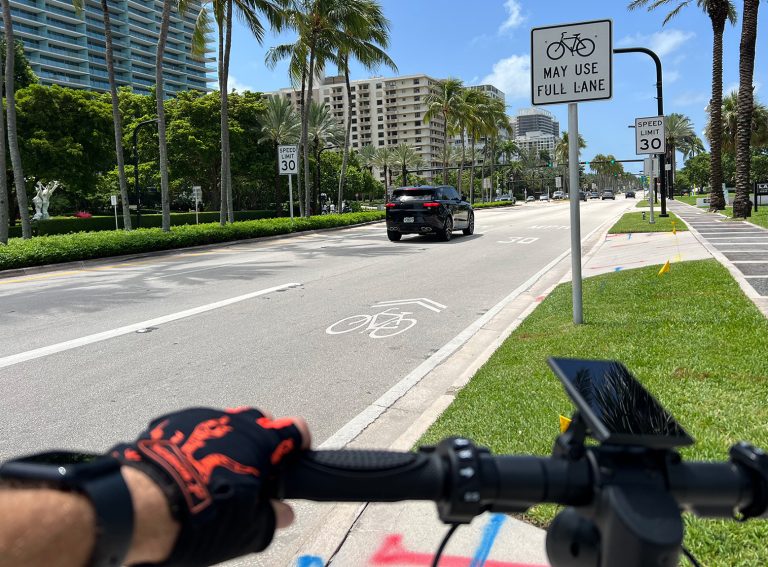Author: Brandon Schuh, Senior Vice President at U.S. Insurance Broker Christensen Group
I had the pleasure of speaking at CalBike in San Diego last week alongside a very enthusiastic contingent of the California biking community. We had them all there, from cycling advocates, to non-profits and regulators.
This was my first time attending the conference and I must say, it was the most devoted and engaged group of attendees I’ve ever seen.
My session included a panelist from two different community bike shares in California; one from Fresno and one from Huron. Two primary issues were discussed on the panel and they both boiled down to money and the need for more of it. Both of these bike shares are subsidised by grants and government subsidies. The Shared Use Mobility Center is the primary benefactor of these. Both Huron and Fresno showcased some astounding successes despite limited financial resources.
Then the discussion started swerving my way and things got hairy.
Both programmes, and the wider California bikeshare community, are having issues with the procurement and expense of insurance. At a high level, most of these state-sponsored bike share programmes are small fleets of 100 to 1,000, most of which are operated on public land.
So the first question I received was “Why is insurance so expensive?” This is not a new question in the shared economy (and micromobility space) but it continues to handicap the sphere. To illustrate these costs from a profit and loss perspective, the moderator discussed a survey taken in the state of California that revealed, on average, 15% of the budget was spent on insurance costs. If you widen that lens and apply that same maths to the wider business community, that is not in the micromobility space, that percentage would be closer to 1% or 2%.
The frequency of bike accidents
So why is insurance so expensive in the bike share space? Well, it’s pretty simple. The propensity for bodily injury claims is so much greater than in other sectors. When you look at the average cost of defending a bodily injury claim, defense costs alone eclipse $100,000 per claim. Then, on top of that, you look at an average settlement cost of over $100,000 and you start to see the picture.
The analogy of Skydiving was asked of me during the panel discussion. The thought is that Skydiving insurance must be really expensive, and are those types of businesses paying the same amount of insurance relative to the overall income or budget? Now, I’m not super connected to the Skydiving world but the short answer was “no”. Skydiving might be scary as hell, but “accidents” are not tolerated in Skydiving, whereas bike accidents happen all the time. I used the analogy of aeroplanes vs. cars. Cars, on a per capita basis, are way more expensive to insure than aeroplanes and that’s because airlines cannot afford accidents. They don’t happen (99.9% of the time). Whereas there are 40,000 deaths a year in the US alone on motor vehicles.
Bearing the brunt of the risk
My second rationale for the high cost of insurance in the bike share space is the intersection of private companies working on public land. There is an incredible misappropriation of indemnity as it relates to city contracts. Most cities push most of the risk onto the operators, even municipal-style risks like potholes, traffic lights, stop signs, crosswalks, etc. The city infrastructure and its issues do not normally fall on the shoulders of private operators. However, when your contract is with the city, which is running a Request for Proposal (RFP) with little space for negotiation, these micromobility contracts tend to be very one-sided with the cities recusing themselves of most risk via contractual risk transfer. I spoke about this and the need for these contracts to become more equal. With operators like Bird, Superpedestrian, Spin, etc. falling by the wayside, there needs to be more equity in these partnerships. When an insurance company insuring an operator has to take on the risk of pothole maintenance, there aren’t a lot of carriers jumping to participate.
Making bike share insurance more affordable
So what can be done? That was the next question. It’s not an easy one to answer. The best answers, in reality, require structural changes. However, I did come up with a few suggestions.
Privatise parking
Ensure the ride starts and ends on private property. This sort of arrangement can disable the need for state/city partnerships and I realise this is antithetical to the historical state-sponsored approach. I understand this is not for everyone but removing the public aspect of the bike share will make insurance much more affordable – likely by a significant factor.
A collaborative Risk Retention Group (RRG)
An RRG is a facility that allows for the combining of unrelated entities into a cooperative that shares risk. If for instance, the State of California funded a Risk Retention group with twenty operators like Huron and Fresno, they could have the same equitable access that Lime, Bird, Lyft, and others have. Similar to aggregators of many kinds, this would be a way to aggregate the risk of smaller entities and buy for scale. The RRG could provide limits to an extent that satisfies the per occurrence requirements and enough aggregate requirement whereby the protection would be adequate. For instance, the RRG could purchase $5M in per occurrence limit and $20M in aggregate. By contrast, if the twenty operators didn’t form an RRG, and each purchased a $5M layer, that would be $100M in occurrence and aggregate. This way you limit the burden and cost but keep the coverage (or most of it) because an aggregate $100m loss is never going to happen.
CalBike was a truly inspiring event. Most of the participants want very basic things. They want adequate infrastructure, they want drivers to be aware of bikers and their surroundings, and they want equitable and balanced access to roads. They also want ideas to minimise costs to do these things. Hopefully, I was able to deliver some ideas that, at a minimum, made them think about one loss leader in a different way.








